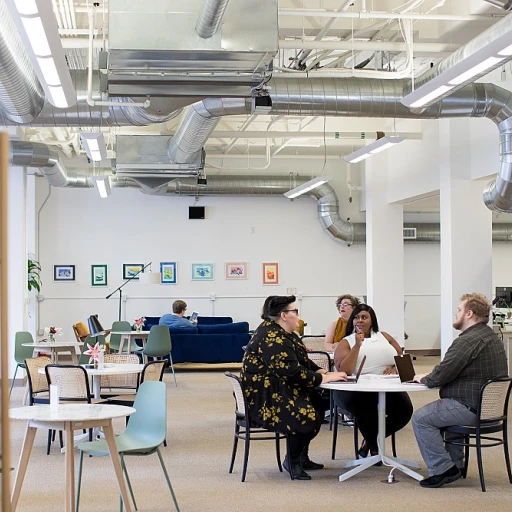
What is an IEP Plan?
Decoding the IEP Plan
An Individualized Education Program (IEP) is a personalized document providing a detailed and structured approach to addressing the unique educational needs of students requiring special education services. This plan is legally mandated for students in public schools, ensuring they receive tailor-made support to meet their specific learning goals. While its genesis lies in providing inclusive education for students with disabilities, the scope of IEPs has broadened to cater to diverse learning challenges faced within the school environment. The IEP plan is crafted with the collective input of the IEP team, which typically includes educators, education specialists, administrators, parents, and often the students themselves. This team is responsible for delineating the student’s current educational status, setting measurable goals, and determining the provision of specific services and supports, such as assistive technology or modifications to instruction. In essence, this document is not merely a form to fill out but a comprehensive strategy to ensure that each child has access to an equitable education program. Each IEP is distinct, aligning with the individualized needs of the student, whether they're in elementary or high school. Furthermore, reading and understanding how the IEP process unfolds can be somewhat overwhelming for newcomers. For a more in-depth understanding of how an IEP aligns with boosting potential, consider exploring resources on decoding the Work Genius Assessment, which assists in comprehending the broader elements of special education support.Key Components of an IEP Plan
Essential Elements for Tailored Support
An Individualized Education Program (IEP) is carefully crafted to cater to the unique needs of a student requiring special education services. This tailored plan serves as a vital document ensuring that students with specific learning disabilities receive the support necessary to thrive in a school environment. Understanding the key components of an IEP is crucial for effectively implementing an education plan tailored to the individual requirements of each child.
Defining Objectives and Goals
Every IEP begins with specific, measurable goals. These goals are designed to address the learning obstacles faced by the student, and they are carefully formulated by the IEP team, which usually comprises teachers, parents, and sometimes the student. These goals form the backbone of the plan, providing a roadmap for success and ensuring the child receives an appropriate education tailored to their needs.
Services and Supports for Success
In addition to goals, the IEP specifies the special education services required by the student. This can include accommodations such as access to assistive technology, adjustments within the general education setting, or more intensive interventions in a special education classroom. By outlining these services, the IEP ensures that each child receives the necessary support to succeed in their educational journey.
Progress Monitoring and Adaptation
An effective IEP is never static; it evolves as the student grows and learns. Regular meetings with the IEP team facilitate progress monitoring, allowing modifications to the education program based on the student’s development. This iterative process ensures that the plan remains aligned with the child's learning needs, ultimately fostering a more effective educational experience.
Collaboration for Comprehensive Coverage
The development and execution of an IEP is a collaborative effort. The IEP team—which can include educators, specialists, and family members—works together to compile an education plan that reflects both the student's abilities and their areas for growth. This teamwork is essential not only in developing the initial plan but also in revising it as necessary, to address new challenges and leverage the student's strengths.
Moreover, success stories of well-implemented IEPs show the potential of these programs to transform educational experiences for students with special needs. By continuously refining the plan, alongside targeted support, students are better equipped to achieve their academic goals and enhance their learning skills over time.
For further insights on this transformative approach, explore how to unlock potential through innovative strategies and integral coherence coaching.
The Role of Continuous Learning in IEPs
Continuous Learning: Fundamental to IEP Success
In the ever-evolving landscape of education, continuous learning serves as a cornerstone in the development of Individualized Education Programs (IEPs). Such adaptability ensures that each student's unique needs are met with precision and care. Continuous learning in IEPs involves a collaborative approach that emphasizes the importance of assessing and refining educational strategies over time. One of the major benefits of integrating continuous learning into IEPs is its ability to promote a dynamic and responsive educational environment. By consistently evaluating the effectiveness of the IEP, educators and IEP teams can identify areas for improvement, make timely adjustments, and ensure that the educational plan remains aligned with the student's evolving needs and strengths. This allows for the consistent achievement of specific goals tailored to each child's requirements. Furthermore, continuous learning supports the development of new skills, incorporating innovative educational practices and technologies. For instance, the use of assistive technology can be regularly reviewed and updated to suit a child's specific learning style, fostering greater independence and confidence in students with special needs. This ongoing evaluation and adaptation are crucial for maintaining an inclusive and effective educational framework. Education teachers play a pivotal role in fostering a culture of continuous learning within IEP teams. They bring their expertise and understanding of both special and general education programs to the table, advocating for student-centered approaches that enhance educational outcomes. By encouraging continuous professional development among educators, schools can ensure that teachers are equipped with the latest tools and strategies to support IEP students. For parents and educators seeking to understand more about the significance of continuous learning in IEP settings, the value of HRIP certification may offer insightful perspectives into acquiring relevant skills. It highlights the importance of staying informed and capable within an ever-changing educational environment. Ultimately, by embedding continuous learning within the fabric of IEPs, stakeholders can better support students, allowing for a tailored and impactful educational journey. This commitment to ongoing improvement and adaptability ensures that educational plans are not static documents but are living, breathing entities that evolve alongside the students they serve.Creating an Effective IEP Plan
Crafting a Tailored Strategy for Success
Creating an effective IEP plan requires collaboration and a focus on the child's unique needs and abilities. Given that every student with an Individualized Education Program has different requirements, it is essential to devise a strategy that addresses specific learning disabilities and aligns with the student's goals and interests. Starting with a comprehensive assessment, the IEP team gathers insights from education professionals, special education teachers, and parents or guardians. This approach helps form a holistic view of the student's abilities and challenges, allowing for the development of a clear set of actionable goals. Key to crafting an IEP plan is:- Thorough Evaluation: Conducting an assessment to understand the student’s current skills and areas requiring development.
- Goal Setting: Defining specific, measurable, and achievable goals that consider the student’s strengths and areas for improvement.
- Customized Education Program: Developing a tailored education plan that integrates specialized services, including general education and special education, to support the student's learning journey.
- Student-Centric Support: Providing help in the form of assistive technology and any other resources necessary to aid learning.












